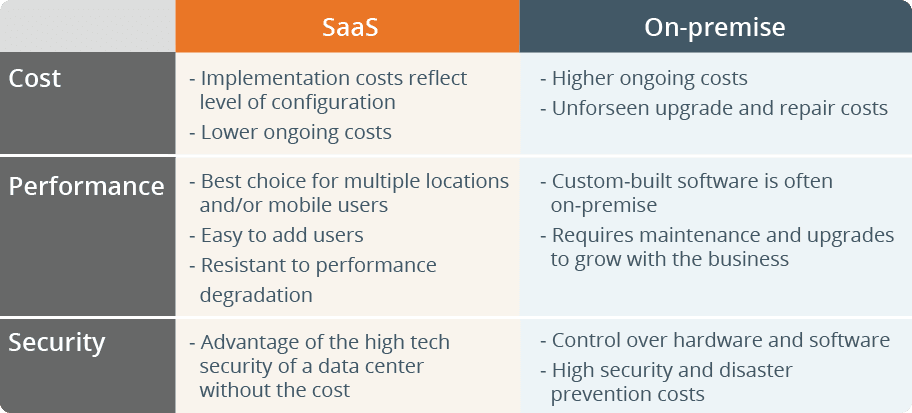Remember CD-ROMs?
How about installation procedures that should have started with, “Do you have 6 hours for this?”, and frequent new versions that produced compatibility nightmares. Thankfully, technology is always moving toward efficiencies. At the personal consumer level, programs that were once only available on a disc, such as antivirus software and word processors, are now purchased and installed online. For more complex, larger programs, downloading the entire software package onto a computer is not always feasible, especially for laptops. The solution: SaaS programs which allow users to access the software through a web browser or app.

SaaS Solutions for Enterprise
Compared to software programs located in servers on-premise, SaaS for enterprise allows small and medium-sized companies to benefit from powerful software solutions without investing in the staff and infrastructure needed for a large-scale IT department. SaaS vendors maintain the related databases and code that make up the program. They may host and maintain the servers, as well. Updates, bug fixes and configurations are all handled by the vendor, who also offers tech support and customer service. It’s likely you’ve already been using a SaaS: Gmail and other Google Apps, Office 365, Zendesk and Dropbox are all delivered on a SaaS model.
Let’s take a look at how SaaS compares to on-premise in cost, performance and security.
Cost
To get an accurate picture, it’s important to break down software costs into two categories: upfront and ongoing. The on-premise upfront cost is the price of licensing the software, which can range widely. SaaS applications require some configuration and training with the implementation, so the upfront cost depends on the complexity of the program. The ongoing costs are where on-premise and SaaS diverge significantly. A monthly subscription fee will keep your SaaS app rolling and will include varying levels of IT support, depending on your contract. For on-premise, costs are more substantial and much less predictable. IT salaries, rent and vendor maintenance fees, unexpected downtime, upgrades, repairs, training and customizations can make on-premise software hosting cost prohibitive.
Performance
How these options compare in performance depends on what the user needs them to do. On-premise software can be extensively customized for complex, highly specialized businesses such as aerospace components manufacturers. For businesses that have multiple locations or mobile crews, SaaS is the clear winner. While performance can be impacted by the speed and reliability of the internet in your area, many vendors (including Aimsio) have developed apps that work offline and will sync data when the device regains a strong signal.
Security
Here’s some real-talk about the security of the cloud: the server in your office is not less-accessible to cyber villains than a server in a remote data center. In fact, dedicated server banks have more money and resources to protect your data with cutting edge technology. Plus, what happens to your system if the office above has a toilet overflow on the weekend? Or if the building next door catches fire? These threats are difficult to mitigate and make a strong case for cloud computing and remote servers.

Is a SaaS solution right for your business?
The short answer is, it depends. For many businesses, SaaS applications not only offer powerful solutions for the right price, they allow companies to avoid the high ongoing costs of on-premise software. SaaS is the also the best choice when software must be accessed by mobile devices, which happens to be Aimsio’s wheelhouse. We’ve witnessed how field operations become very efficient when the office can easily access data from their remote crews every day. By delivering our management software as a SaaS application, we can offer our clients reliable, flexible communication to and from their field operations. But, for some large, multinational, highly-specialized companies, customized software is required in an on-premise format.
At Aimsio, we built our field operation management software to be delivered on a SaaS model because it allows us to offer our clients the most features at an affordable price.




